Maximize Your Event Revenue by Avoiding These 3 Big Mistakes
Events take a lot of time and resources, but they’re worth it, right? Yes! But what if you find you’re not quite hitting the metrics you want? Maybe you’re not hitting your overall revenue goal, or your attendance target, or the event didn’t drive your fundraising campaign the way you thought it would. That’s when it’s time to take a closer look at what’s impacting your revenue growth.
But first, make sure you’re not making one of these big mistakes!
No Clear Event Strategy
First, make sure you’re taking the time to create a purpose-driven event strategy. This core process will help ensure staff and volunteers have clarity on what the event is and isn’t, and make sure you aren’t trying to do too many things. Professional development conferences, community gatherings, membership benefits, and fundraising all have different purposes and require different thinking and different plans. Year-over-year, it’s important to thoughtfully evaluate your key performance indicators (KPIs) and look at your return on investment with an event. But it’s hard to do that without a strategy or event campaign that people understand. Otherwise, metrics are just numbers. The better that everyone understands how revenue intersects with your event strategy, the better they can implement tactics to drive growth in ways that reflect your community or brand culture.
Copy-Paste Event Features
This misstep comes into play when proper consideration isn’t given for your unique audience, which creates revenue issues downstream. Maybe your competitor is doing something cool and your staff want to replicate it; or perhaps one of your VIPs or key stakeholders pushes an idea they saw at an unrelated type of event in a different industry and the team feels compelled to execute it despite big challenges. To keep everyone focused on value-drivers and direct revenue-generating features, try to weed out unnecessary and low value elements. Look for things that are time-consuming, small dollar, complex with low value, and any add-ons that distract from your event goals. For some organizations, this means reconsidering things like selling swag, custom offerings, and more. The time your staff spend coordinating a t-shirt order or organizing under-used benefits could be redirected toward building relationships with higher-dollar donor prospects, supporting your volunteers to grow the reach of their promotional efforts, or making strategic shifts in your targeting the right people for your program.
No Strategic Event Partner
Is your development director also your default event director? Is your Executive Director your default event strategist? Neither of these individuals can possibly maximize their impact on driving community interest, developing strategic relationships with the right companies or individuals, or driving giving campaigns and partnerships if they’re bogged down trying to formulate an event strategy and managing the week-over-week event execution. Hire a strategic partner to collaborate with your key development staff so their work is amplified with an integrated and aligned event strategy. Most importantly, you’re preserving the necessary time for them to work their plans, ensuring they’re able to fully execute their vision and not leaving sponsorship or fundraising efforts untapped.
If you’ve found yourself saying UH-OH! while reading this, don’t panic. I can help. We’ll figure it out together.
